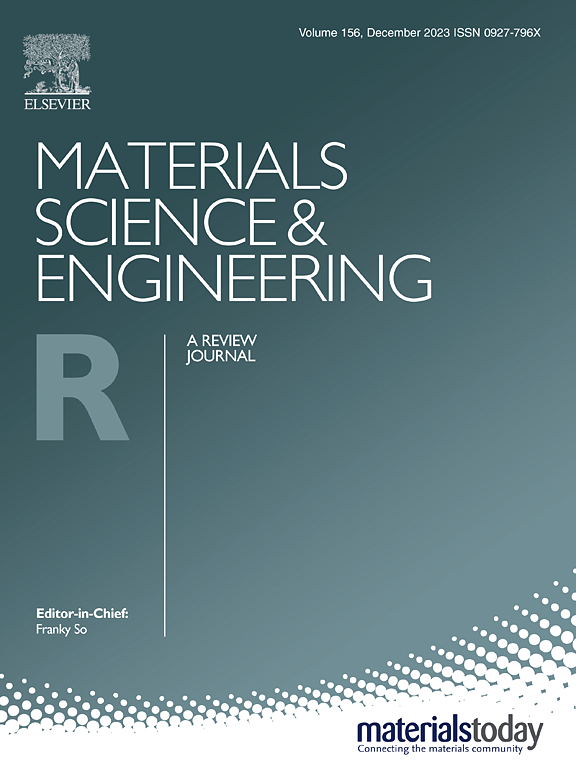基于二维材料的p型晶体管的单片三维集成
IF 31.6
1区 材料科学
Q1 MATERIALS SCIENCE, MULTIDISCIPLINARY
引用次数: 0
摘要
单片三维(M3D)集成为硅(Si)集成电路的局限性提供了一个有前途的解决方案,因为硅(Si)集成电路达到了其物理极限,包括功率使用和散热问题。M3D集成通过实现多个设备层的垂直堆叠,大大提高了设备密度,提高了性能,降低了功耗和组件之间的通信延迟。二维(2D)材料以其卓越的电性能和最小的厚度而闻名,为推进互补金属氧化物半导体(CMOS)晶体管的缩放提供了一种有前途的方法。基于二维材料的p型晶体管在制造具有低静态功耗和高抗噪性的CMOS电路中起着至关重要的作用,这对电子器件的效率和可靠性至关重要。尽管在开发n型2D晶体管并将其集成到M3D架构方面取得了重大进展,但M3D与p型2D晶体管集成的进展仍处于早期阶段。本文综述了M3D集成的最新现状和面临的挑战,重点介绍了基于2D材料的p型晶体管。我们概述了关键的2D p型材料及其合成技术,然后详细讨论了集成策略,包括平面集成,3D堆叠互补晶体管和M3D集成。最后,我们讨论了实现M3D与高性能2D p型晶体管集成的挑战、潜在策略和机遇。本综述旨在为推动高性能、节能和密集集成的M3D CMOS电子器件的未来创新提供基础理解。本文章由计算机程序翻译,如有差异,请以英文原文为准。
Monolithic three-dimensional integration with 2D material-based p-type transistors
Monolithic three-dimensional (M3D) integration offers a promising solution to the limitations of silicon (Si) integrated circuits as they reach their physical limits, including problems with power use and heat dissipation. By enabling the vertical stacking of multiple device layers, M3D integration significantly increases device density, enhances performance, and reduces power consumption and communication delays between components. Two-dimensional (2D) materials, recognized for their exceptional electrical properties and minimal thickness, offer a promising approach to advancing the scaling of complementary metal-oxide-semiconductor (CMOS) transistors. 2D material-based p-type transistors play a vital role in creating CMOS circuits with low static power dissipation and high noise immunity, which are critical for the efficiency and reliability of electronic devices. Although significant progress has been made in developing n-type 2D transistors and integrating them into M3D architectures, advancements in M3D integration with p-type 2D transistors are still in the early stages. Here, the recent status and ongoing challenges in M3D integration are reviewed, focusing on 2D materials-based p-type transistors. We provide an overview of key 2D p-type materials and their synthesis techniques, followed by a detailed discussion of integration strategies, including planar integration, 3D stacked complementary transistors, and M3D integration. Finally, we discuss the challenges, potential strategies, and opportunities in achieving M3D integration with high-performance 2D p-type transistors. The review aims to provide a foundational understanding for driving future innovations in high-performance, energy-efficient, and densely integrated M3D CMOS electronic devices.
求助全文
通过发布文献求助,成功后即可免费获取论文全文。
去求助
来源期刊

Materials Science and Engineering: R: Reports
工程技术-材料科学:综合
CiteScore
60.50
自引率
0.30%
发文量
19
审稿时长
34 days
期刊介绍:
Materials Science & Engineering R: Reports is a journal that covers a wide range of topics in the field of materials science and engineering. It publishes both experimental and theoretical research papers, providing background information and critical assessments on various topics. The journal aims to publish high-quality and novel research papers and reviews.
The subject areas covered by the journal include Materials Science (General), Electronic Materials, Optical Materials, and Magnetic Materials. In addition to regular issues, the journal also publishes special issues on key themes in the field of materials science, including Energy Materials, Materials for Health, Materials Discovery, Innovation for High Value Manufacturing, and Sustainable Materials development.
 求助内容:
求助内容: 应助结果提醒方式:
应助结果提醒方式:


